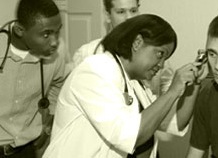Residency Regulators are Back!
How many hours can a doctor work?
The residency regulators are back. About ten years ago, the national organization that accredits residency programs (ACGME) set out its first guidelines about how many hours a doctor-in-training can work. Interns and residents finally achieved the vaunted 80-hour workweek. (New York State was 15 years ahead on this, having mandated an 80-hour work week in 1989, stemming from the Libby Zion case.)
Every patient wants a doctor who is well rested and alert, but limiting residents to 80 hours per week wasn’t as simple a panacea as it seemed, as I wrote in an editorial in the Resident Hours Perspective NEJM shortly after the ACGME regulations were issued.
Practical issues abounded, mainly concerning the increased number of hand-offs required, as patients had to be cycled between teams of doctors. Less quantifiable, though no less concerning, was the inevitable progression toward “shift-mentality†and a decrease in professionalism.
In fact, the 80-hour workweek did not decrease errors and did not increase sleep time for the doctors. The ACGME has recognized this and has now issued a new report. In essence, they have admitted what all of us who teach new doctors already know, that medicine is far too complex to apply simple formulas. What really helps doctors-in-training practice good medicine, decrease errors, and maintain a high standard of professionalism is good supervision.
It might seem like stating the obvious, but fresh-off-the-boat interns need near-total supervision. These eager new doctors were medical students just an eye-blink ago, and a parchment diploma did not ratchet up their clinical skills overnight. A good supervisor needs to watch closely and teach intensively during this early period.
Over the next several years, as the residents gain skill and confidence, supervisors can ease back, offering more opportunities for independent decision-making. The overall thrust is that the quality of medicine delivered by residency training programs depends heavily on the quality and quantity of supervision provided.
The changes in this area are palpable. When I did my medical residency training almost twenty years ago, senior physicians (attendings) were barely present. The attending showed up once a day to see all the newly admitted patients during an “attending rounds†session, and then returned to his or her private practice. We were on our own for the rest of the patients’ care, even if it lasted weeks.
Now, I am an attending at the very same hospital, but the model is entirely different. When I spend a month supervising a team on the medical wards, I am there full-time. We still have that attending rounds session to talk about new admissions, but we also have the rest of the day. I don’t follow two steps behind my residents and interns every waking moment, but we talk constantly during the day. I also examine the patients independently to make my own clinical assessment. We work as a team six days per week and I can be reasonably sure that we are all on the same page with the patients’ care.
Do errors still happen? Are residents still exhausted? Yes, and yes. But I do think patient care is better for it.
The trick now is to teach them independence and to foster the do-whatever-it-takes-for-your-patients credo that suffused my training years. Not to mention the joys and rewards of medicine.
But that can be done in 80 hours, or at least I am hoping so.

